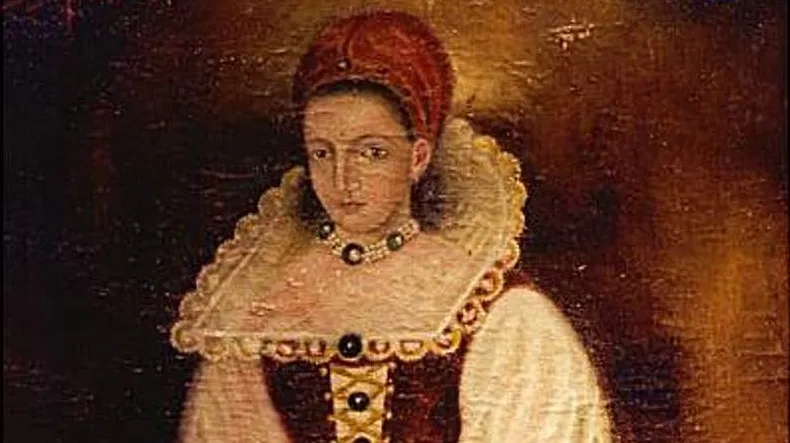Blood Countess (Lady Slayers)
Popovic breathes life into this infamous story, putting a modern, feminist twist on one of the world's most sinister female villains.
My Blood Countess Book Review: Mostly Spoiler Free!

When you’re writing about someone as iconic as Elizabeth Bathory, you have to be careful not to fall too far into the illustrious lore that is her life. What I’m trying to say is that it would be easy to make her a completely one-sided character, devoid of any real personality or traits other than being an insatiable murderess.
This is something that I think Popovic is able to accomplish. Her Bathory certainly is evil, but it’s an evil that we can almost identify with. (Almost.) We can see the way that life has shaped and molded her, how the pressings of a patriarchal society have bent her just a little (OK, a lot) too far in the wrong direction. While she does a fair bit of killing for the fun of it, many of her atrocities have a purpose behind them, whether it is showing up her controlling husband in a game of who can inflict the most pain or finding a way to restore her beauty and youth (as it is her sole means of showing her worth).
As you can see, there’s a theme here, and it all centers around the restrictive bonds that men have over women. Even women as powerful as Elizabeth were still under the dominion of their husbands, and this is something that the headstrong Elizabeth cannot abide by. She uses every tool in her arsenal – mainly, her beauty – to get what she wants, when she wants it. This isn’t to say that the patriarchy is to blame for her insatiable demand for human souls, but… it certainly was a big factor. Elizabeth kills not only because she enjoys it, but because it is the only way for her to maintain any semblance of control in her own life.
Elizabeth’s Foil: Anna
To counterbalance the sinister and malevolent actions of Elizabeth, we have Anna Darvulia, a common girl who lives in the Hungarian countryside. The story is told through her eyes, and in this way, we can see she is a fitting match for Elizabeth’s character. She is also strong, rebellious, and suffering from the hands of men, but rather than fall to darkness as a means of independence, she is able to stay in the bounds of light (until she meets Elizabeth, that is).
Considering these two are sick of being wrapped in the bonds of patriarchy and being played like pawns by men, it should come as no surprise that they are instantly drawn to one another. At first, their relationship lets us think that Elizabeth might have a soft spot – we, like Anna, want to believe that maybe she is just misled, mistaken, misunderstood – but as the plot continues to unwind, we quickly realize that Elizabeth knows exactly what she is doing.
Just because Anna is the book’s heroine, doesn’t mean she is perfect. She also commits atrocities throughout the novel, though compared to Elizabeth’s actions, these are nothing. However, the main difference between the two is the way Anna reacts to her decision. The agony of the choice consumes her, darkening her heart and blackening her mind until she is just a shell of the bright and happy girl she once was. In some ways, the clever gaslighting by Elizabeth is even crueler than her murders, as it works to slowly steal Anna’s sanity throughout the course of the book.
Elizabeth, on the other hand, shows no regret or remorse. Rather, she lets her anger consume her, fueling the fire that is her darkness until it bursts in a lurid, unsustainable glow.
Just How Gruesome Does Blood Countess Get?

If you’re not familiar with the real-life tale of Elizabeth Bathory, buckle in. It’s time for an extremely short history lesson.
Elizabeth Bathory was born in 1560 as a Hungarian noblewoman. Around the age of 40, Elizabeth started collecting servant girls from local peasant families. These girls were all beaten, mutilated, or murdered in hideous fashion. Once the local villages were depleted, she sent away for daughters of lesser gentry throughout the country under the guise of a finishing school – these women were also killed in unspeakable manners – everything from being covered in honey and live ants to being burned with hot tongs and then thrown in icy water to freeze to death.
With all that in mind, you may be wondering… just how gruesome does Blood Countess get? Do we really get to see piles of bodies and cannibalism and everything else Elizabeth was accused of throughout history?
Not really. Overall, this book is mostly tame considering the real-life grisly stories it is based on. Much of what Elizabeth does happens behind closed doors, but in some ways, this makes it even more terrifying. After being blissfully ignorant for months (thanks to Elizabeth’s cunning legerdemain), Anna finally catches on to what is happening and is left to wonder what has actually occurred behind closed doors. In short, this book plays strongly on the emotional and mental horror of the situation rather than focusing on ghastly descriptions of torture and disfigurement.
Don’t worry too much – there are still scenes in the book that go into all the horrific details, pain, and suffering of Elizabeth’s victims. But just know that this isn’t all the book is about – and I think that’s a good decision.
Overall Conclusions
Blood Countess by Lana Popovic is a really interesting take on Elizabeth Bathory. I love Popovic’s female-focused view on traditionally male spaces, especially when it comes to a character like Elizabeth, who could just be written off as crazy or incompetent. Instead, Popovic breathes life into this infamous story, putting a modern, feminist twist on one of the world’s most sinister female villains.

